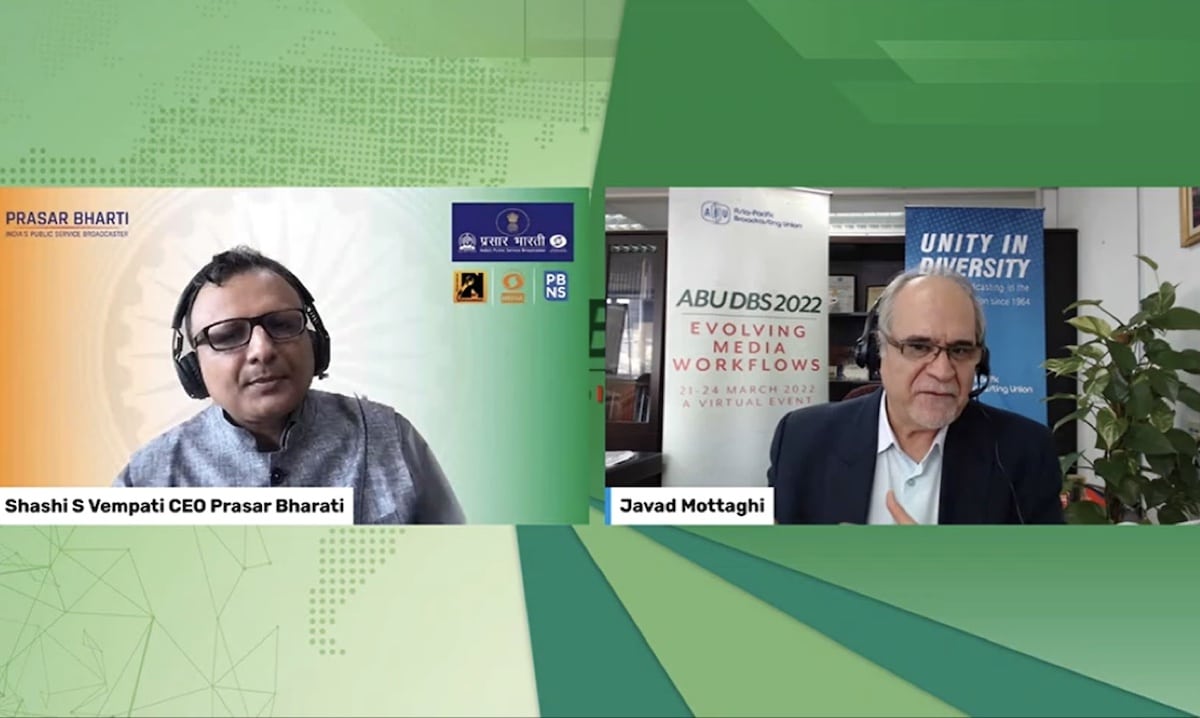Radio was the subject of dedicated sessions and some industry focus during the four-day virtual Asia-Pacific Broadcasting Union DBS 2022 from March 21 to 24.
Both DAB+ and DRM bodies ran dedicated sessions, focusing on case studies from digital radio early-adopter countries, technical updates and potential digital broadcasting developments in terms of industry strategies and listener engagement.
Simon Keens, sales and business development manager at Ampegon, and Oscar Hu, regional sales manager at Gates Air, highlighted the cost savings associated with the higher efficiency of digital radio standards. Keens focused on DRM and Hu on DAB+.
The wider availability of high-quality data connections through mobile telephone networks is leveraging the potential for more advanced mobile journalism productions. Ahmad Shafiq Mirza Mansor, assistant director of engineering at Radio Televisyen Malaysia, shared the company’s insights into mobile journalism coverage of major events, including general elections and sports matches.
Field-reporting during crises is a core mission for radio news broadcasters. Ensuring professional contributions under those conditions, where available bandwidth can be unpredictable and low, is a challenge that researchers are working on.
AI-based audio codecs
In his contribution on AI-based audio codecs, Mohammad Reza Hasanabadi, senior researcher at the Islamic Republic of Iran Broadcasting, deepened the recent developments in machine learning and deep learning audio codecs. Based on Recurrent Neural Network technology, Lyra is an audio codec released by Google AI and designed to operate under very low bitrates. Lyra can deliver real-time speech (with 90ms processing latency) operating at just 3kbps.
SoundStream is Google AI’s latest end-to-end neural audio codec. Released in August 2021 and based on a blend of AI technologies, SoundStream is a scalable codec that combines audio compression and enhancement capabilities. Operating at 3kbps, SoundStream outperforms Opus, one of the most efficient, traditional audio codecs available, and which operates at 12 kbps.
Alerting protocol
The ABU DBS dedicated the last session to spreading the knowledge about the features and benefits of the Common Alerting Protocol standard, an XML-based data format for exchanging public warnings and emergency messages that must be consistently disseminated simultaneously over different systems and applications.
Eliot Christian, developer of the CAP, defined it as a “universal adaptor” for alerts, capable of coping with special needs and language barriers. Adopted in North America, Australia and some European countries, CAP delivers digital messages through virtually any communication medium. Receivers can include radio and smartphones and devices like sirens, highway signs, train controls, and other automated mechanisms that can immediately react to the warning, thus helping save lives.

